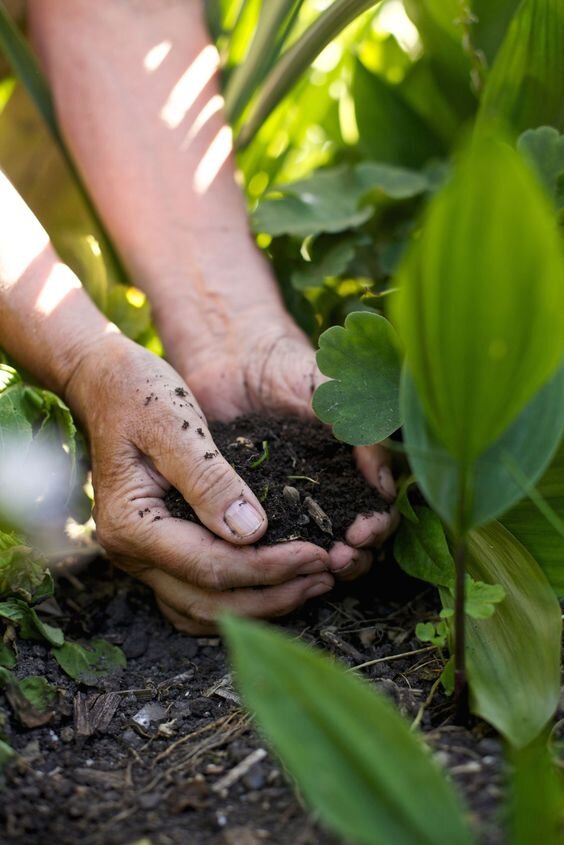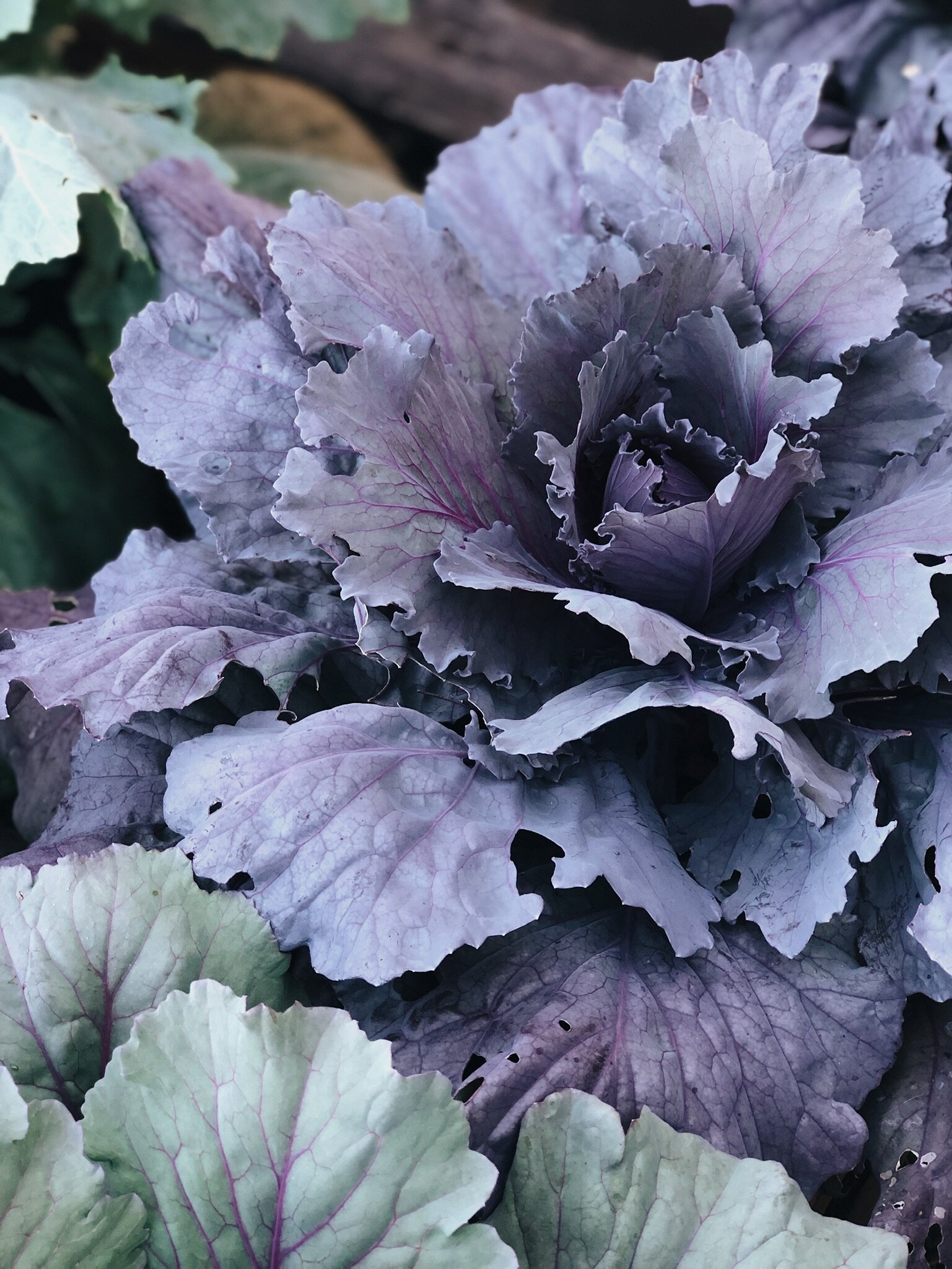
B L O G
How and When To Prune Your Shrubs
Pruning is an essential part of a plant’s life. Not only does it make your shrub look refreshed, but it also encourages healthy growth and sustainability for your plant to last year after year. And if you follow these steps on how and when to prune your shrubs, you’ll having your gorgeous shrubs lasting quite a long time.
Pruning is an essential part of a plant’s life. Not only does it make your shrub look refreshed, but it also encourages healthy growth and sustainability for your plant to last year after year. And if you follow these steps on how and when to prune your shrubs, you’ll having your gorgeous shrubs lasting quite a long time.
Why You Should Prune Your Shrubs
So why do it? Well, as plants grow, mature, and produce seeds/fruit/flowers, a little bit of maintenance and love is required from us. Pruning is the act of removing branches, leaves, and buds from a plant in order to make it more attractive, or to maintain its health.
Why take the extra time? Because your plant relies HEAVILY on it. Pruning removes any dead, dying, or diseased portion of the plant and helps to prevent spreading any disease throughout. Pruning also allows more light and air to pass throughout the plant, giving it more nutrients and allowing room for new growth.
Another common reason to prune would be what’s called “training” or “shaping”, which is when you want to shape a tree, hedge, or shrub. Training is accomplished by cutting branches to restrict growth. It also reduces the amount of branches, so an increase in energy and nutrients can go to all the other stems to produce more flowers/fruit.
When to Prune
It's important to remember to research your plant's specific needs, because no plant is the same as the other. However, here is a basic guideline that can assist you when there are no resources at hand:
Flowering Shrubs- prune immediately after blooming has ended
Non-Blooming Shrubs- prune late Winter or early Spring
Seasonal Pruning Guideline
Late winter is usually a time to prune fruit trees, non-flowering shrubs, trees, hedges, and berried shrubs/trees.
Spring is a time to prune any summer flower shrubs that have not bloomed yet.
Late spring pruning involves cutting back spring flowering shrubs that have already bloomed.
Summer is a great time to prune summer flowers after they have finished blooming.
Fall is a great time to prune roses, and also to remove any annuals that are finished with their season.
How to Prune
The two ways to prune your plant are by Heading + Thinning.
1. Heading
Heading is cutting off part of a branch in order to make the rest of the remaining branch stronger. It is used when new growth is wanted. If you are wanting new growth, you will want to cut the branch/stem just above the bud at an angle, remembering not to cut too close to the bud, but also not too far away. It may sound complicated, but we would be glad to show you how this achieved if you stop by one of our locations here in North Carolina.
2. Thinning
Thinning is cutting off a branch at its origin to prevent any new growth. This could include cutting to the main trunk or even to the ground. Often times a “thinning” technique is used when you are wanting to increase air flow and light to the plant. This helps to prevent diseases and boosts the bud and fruit production.
Pruning is an art that can seem complicated and difficult at first. But, once the basics are learned, it can become a freeing and therapeutic experience. And maybe we, as humans, can take a few principles from pruning, and apply them to our lives to make us stronger and healthier versions of ourselves. Because sometimes removing something, can actually be freeing at the end of it all.
Happy Pruning,
Your GVM Team
Growing Gigantic Monstera Deliciosa
If you’re looking for a beginner-friendly houseplant that’s large and in charge, then we recommend the Monstera Deliciosa. This gorgeous plant has beautiful green foliage, uniquely shaped leaves, is easy to propagate, and will leave you wanting one in every room of your house. Here’s how to take care of them and keep them happy for many years to come:
If you’re looking for a beginner-friendly house plant that’s large and in charge, then we recommend the Monstera Deliciosa. This gorgeous plant has beautiful green foliage, uniquely shaped leaves, is easy to propagate, and will leave you wanting one in every room of your house. Here’s how to take care of them and keep them happy for many years to come:
L O C A T I O N
Place your Monstera in a spot where it can receive bright to medium indirect light. If they get too much direct sunlight, this can cause the leaves to burn. But the opposite condition, too little light, will eventually cause the leaves/plant to droop and die off. Let’s keep them happy by placing them near a window that may receive a few minutes of direct sunlight, but mostly will be exposed to indirect sun.
To note- Monstera do like humid conditions, so if you have a bathroom with plenty of space and a window, this a great location to place them. Also, we would be very jealous if you did.
S O I L
Monstera Deliciosa are basic and okay with good ole’ indoor potting soil. Nothing special. To encourage a faster growth rate, you can repot them every spring into another pot that’s an inch or two larger in diameter. This gives them ample space that will encourage new root growth, which means you will get a plant that will become bigger and healthier.
W A T E R I N G
Watering your Monstera is not super tricky. A weekly watering should do the trick for them. If you notice that the top layer of soil is still wet, maybe hold off on watering for a day or two and then proceed as normal.
And as we mentioned before, they do like humid conditions, so if you have a humidifier and don’t know where to place it during the winter months, then we recommend placing near your giant Monstera.
P R O P O G A T I N G
…using stem cuttings, which is the most common method.
1. Find an aerial root on your stem that has a node and, ideally, two healthy leaves.
2. Cut 1/2 inch below the aerial root with sharp scissors at a 45 degree angle.
3. Place cutting into a jar of your choice that’s filled with enough water to cover about 1/4 of the entire stem. (Be sure that your jar is able to keep your stem in an upright position)
4. Change out the water every 2 weeks, and be sure that the cutting is placed in INDIRECT sun.
5. You should begin to see roots growing in about three weeks, but we recommend waiting about one to two months before transplanting into soil. For the first month of them being planted in new soil, make sure to water it every few days to encourage root attachment.
WE WANT TO KNOW…
do you have a Monstera Deliciosa? If not, will you get one? We have plenty to choose from at a few of our locations. Let us know in the comments below. You can also share your Monstera moments with us by using #gardenvalleyfarmersmarket on Facebook or Instagram. We can’t wait to see!
Thank you so much for joining us here. For more information on what Garden Valley Farmers Market is about, you can visit us here. If you’re wanting to visit with us, come by any of our five North Carolina locations. If you’re wanting to follow along with us, you can do so either on our Facebook, Youtube, or our Instagram. If you’re wanting to earn rewards and be easily connected with us, download our new App. And if you’re wanting to check out our other recipes and blog posts, or are needing more inspiration, follow us on our Pinterest. We’d love to have you join us in our journey of planting better, eating better, and living better.
Much love,
Your Garden Valley Farmers Market Team
Preparing Your Garden For Fall
It’s almost time… And you all know what we’re talking about… FALL. Cool, crisp temperatures, changing leaves, pumpkins, pansies, mums, and all things Autumn. And we have a few tips and tricks for you as you prepare your garden for this glorious Autumn season.
It’s almost time… And you all know what we’re talking about… FALL. Cool, crisp temperatures, changing leaves, pumpkins, pansies, mums, and all things Autumn. And we have a few tips and tricks for you as you prepare your garden for this glorious Autumn season.
1. Clean out any summer vegetables and flowers that will not survive the season. Pull up the nonproductive vegetable plants and flowers that are no longer producing those gorgeous summer blooms and vegetables. This process can be bittersweet, but sometimes it’s necessary to make space and “clean” it for any future plants that are needing fresh new soil.
2. Compost what is not diseased and use for winter or next spring’s garden. You don’t have to throw those beautiful plants away and never see them again. In fact, you're able to put those in a bin and compost them for future use. Compost is GREAT for the soil and if you cover it with mulch, it adds much needed nutrients to your soil.
3. Even if you are not planting any vegetables or flowers for the fall, it’s very important to prepare your soil for the following year. Add an extra layer of compost and mix it in with the soil with a rake. It’s a great way to loosen your soil and prepare it for your future garden. This process also help to provide your soil with vital nutrients needed for your next crop. Because healthy soil means healthy plants.
Image via Gardening Know How
4. Plant a cover crop. Fall cover crops are another great way to put nutrients back into your soil while waiting for the spring and summer months to arrive again. Here is a great article specific to zone 7 on types of cover crops that you could plant in your garden.
Image via Pexels
But what should you plant in the Fall?
You can plant basically any cruciferous vegetable: cauliflower, broccoli, cabbage, beets, kale, turnips, and so much more! Here are the two ways you can do this:
Image via Fine Gardening
From seed.
If you’re starting from seed, it’s usually a bit more time consuming, but is cheaper. And it requires a bit of counting backwards from your frost date, which is usually provided on the back of the seed packet.
From transplant.
This option is usually much easier. You also don’t need to start quite as early, which is great if you haven’t already started on your Fall garden! Plus, let’s be honest, gardening in the fall is much nicer due to the cooler weather and nice breeze.
Thank you so much for joining us here. For more information on what Garden Valley Farmers Market is about, you can visit us here. If you’re wanting to visit with us, come by any of our five North Carolina locations. If you’re wanting to follow along with us, you can do so either on our Facebook, Youtube, or our Instagram. If you’re wanting to earn rewards and be easily connected with us, download our new App. And if you’re wanting to check out our other recipes and blog posts, or are needing more inspiration, follow us on our Pinterest. We’d love to have you join us in our journey of planting better, eating better, and living better.
Much love,
Your Garden Valley Farmers Market Team
7 Perennials That Thrive In The Shade
So you want to have a beautiful yard filled with plants that will add character, but you have no sun because your entire yard is covered with trees? Do you have a back covered patio that’s in need of some refreshing and updating? Well, we at Garden Valley Farmers Market, have got you covered with our seven favorite perennials that will absolutely THRIVE in the shade, and leave your house looking like a home for years to come…
Do you want to have a beautiful yard filled with plants that will add character, but you have no sun because your entire yard is covered with trees? Do you have a back covered patio that’s in need of some refreshing and updating? Well, Garden Valley Farmers Market has got you covered with seven favorite perennials that will absolutely THRIVE in the shade, and leave your house looking like a dream home for years to come.
Here are our top seven shade perennial picks:
Autumn Ferns
The Autumn Fern is a great choice to add some color dimension to your perennial collection. They have a beautiful coppery red foliage in the spring that turns a rich kelly green color by the summer. These plants like to be in well-draining, moist soil, but be careful that it does not receive too much water, as it can be prone to root-rot. Overall, these plants are easy going, but are slow growing. To protect them from frost during the winter months, we recommend adding a layer (about one to two inches) of mulch or compost to protect the roots.
Bugleweed
Bugleweed makes an excellent ground cover, filled with a gorgeous blue/purple flowers that bloom in May/June. It is also commonly used for medicinal purposes, which you can read about here. Bugleweed is a great way to add color to your shade garden, but be careful where you plant it, because it is an invasive plant and can easily take over your entire garden if not careful.
Coral Bells (Alumroot)
Available in a wide array of colors, Coral Bells have tall, bell shaped blooms that show themselves in late spring/early summer. They are often found in mountainous, woodland, and prairie areas. They have subtle bloom colors of white, pink, and red that attract butterflies, bees, and some hummingbirds. And they have a beautiful foliage color of bronze and purple. These plants, like the Autumn Fern, do well in moist, well-draining soil.
Hydrangeas
With a wide variety to choose from, Hydrangeas are a perfect option for your shaded garden if you’re wanting to add beautiful, show-stopping color. Most varieties of Hydrangeas do require some morning sun, as the sun in the afternoon may be too hot for them. Did you know you can even change the color of the blooms? Alkaline soil makes pink blooms, and acidic soil makes blue/purple blooms. Regular watering may be required on really hot days, but a fresh watering will perk them up and leave them spreading joy to you all summer long (and sometimes even into the fall).
Japanese Holly Fern
The Japanese Holly Fern is a very hardy fern that embodies glossy, dark green leaflets. It remains an evergreen in mild winters, and remains a perfect choice for your ground cover or or border edging in your shade garden. Japanese Holly Ferns can grow up to two feet tall and three feet wide, so be sure to keep the mature plant in mind and allow for plenty of room to grow. And like the Autumn Ferns, they also like evenly moist, well-draining soil.
Hostas
As a very low maintenance plant, Hosta is another great option if you’re wanting to provide rich beautiful foliage. And with an amazingly wide variety of sizes, colors, and textures, you have many options to pick from! Hostas will even produce flowers in the summer that tantalize the hummingbirds and bees, attracting them to garden.
Pictum Japanese Painted Fern
With a beautiful blue-green foliage and silver edging, these low maintenance ferns will also add some color dimension to your shade garden. They can grow up to two feet tall and 2 feet wide. Pictum Ferns would make a great border around a fish pond, or even at the edge of your Hydrangeas.
We have many of these options available at our locations at Garden Valley Farmers Market, North Carolina. We hope that this will excite you with the inspiration you need for your shade garden. Here are a few of our favorite shade landscapes that we think will inspire you even more:
Images sourced via Pinterest
Thank you so much for joining us here. For more information on what Garden Valley Farmers Market is about, you can visit us here. If you’re wanting to visit with us, come by any of our five North Carolina locations. If you’re wanting to follow along with us, you can do so either on our Facebook, Youtube, or our Instagram. If you’re wanting to earn rewards and be easily connected with us, download our new App. And if you’re wanting to check out our other recipes and blog posts, or are needing more inspiration, follow us on our Pinterest. We’d love to have you join us in our journey of planting better, eating better, and living better.
Much love,
Your Garden Valley Farmers Market Team























































